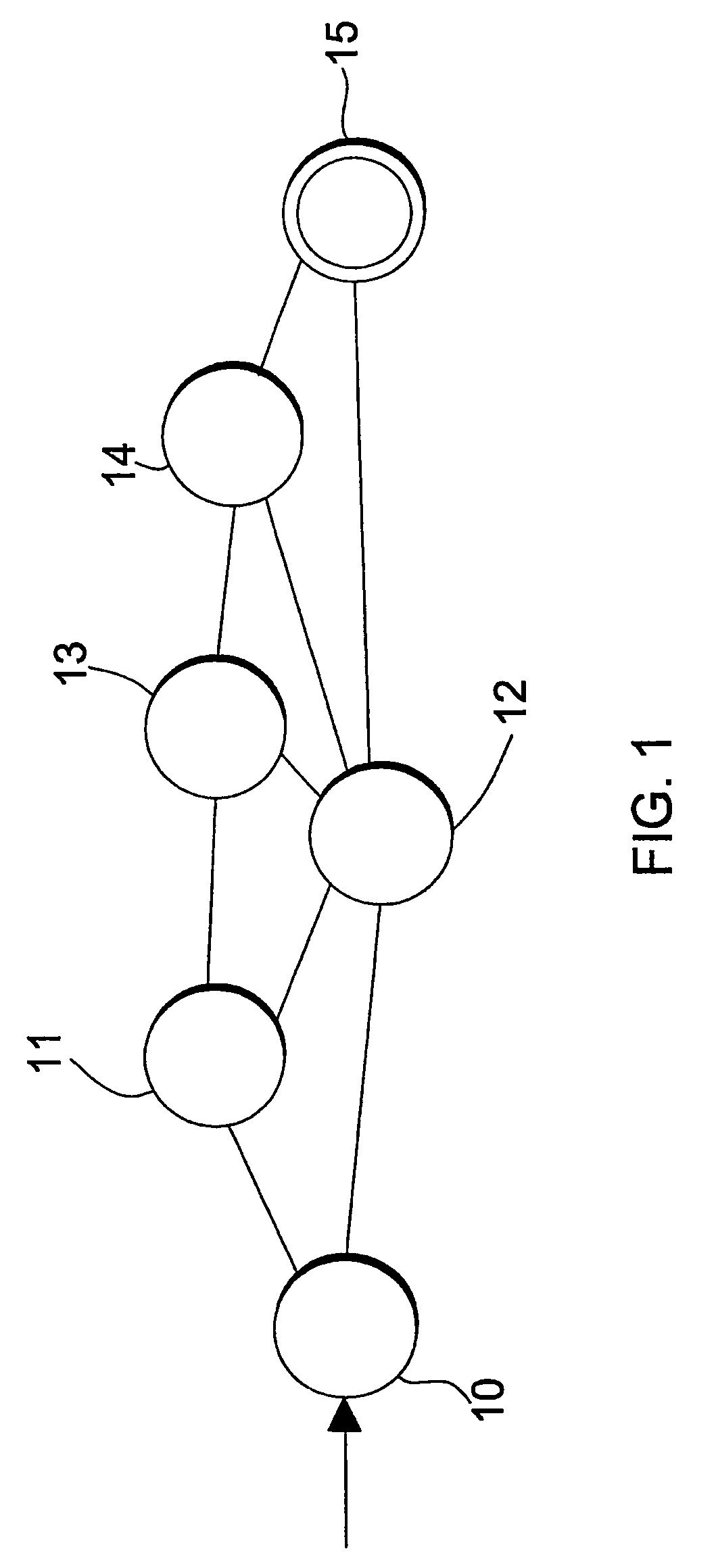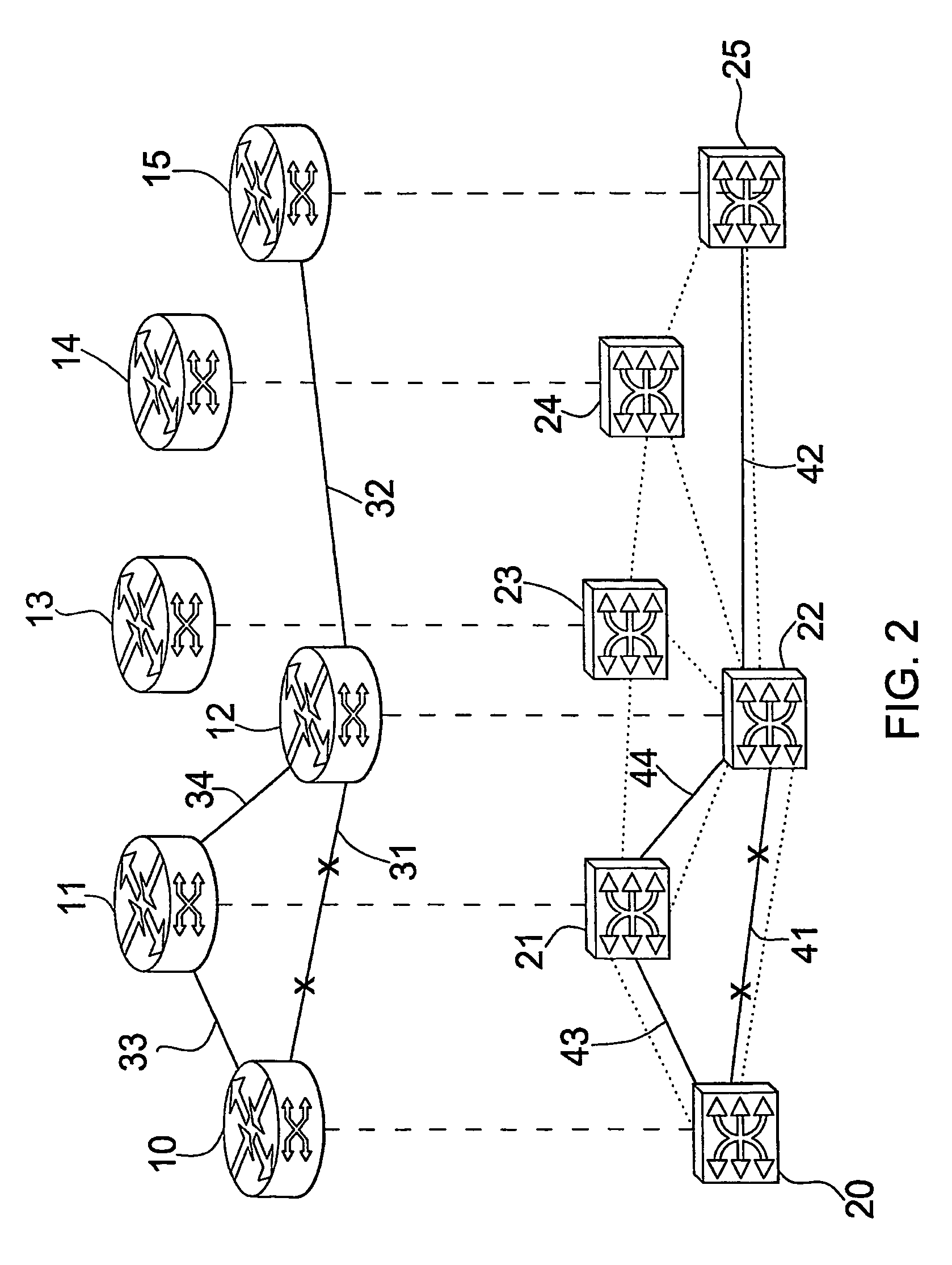Dynamic routing in packet-switching multi-layer communications networks
a multi-layer communication and dynamic routing technology, applied in the field of packet-switching communications networks, can solve the problems of affecting network performance, current backbone network architecture, and affecting network performance, and achieve the effect of improving performan
- Summary
- Abstract
- Description
- Claims
- Application Information
AI Technical Summary
Benefits of technology
Problems solved by technology
Method used
Image
Examples
Embodiment Construction
[0045]FIG. 1 is a schematic view showing an exemplary communications network comprising a plurality of nodes 10 to 15 and an exemplary data packet which is to travel from start node 10 to end node 15.
[0046]The nodes are treated in two different levels or domains: a logical or routing level and a physical level.
[0047]Each node in the logical domain is associated to a router, hereinafter indicated with the same reference number as the corresponding node, which performs the necessary actions to route an incoming data packet to a next node along a path leading to the final packet destination address.
[0048]Similarly, each node in the physical domain is associated to a switch, which performs the necessary actions to physically transfer an incoming data packet to the next switch through a selected physical transport means.
[0049]A generic connection between two nodes, namely a source node and a destination node, as treated in the logical domain, is referred to as a logical link, while the a...
PUM
 Login to View More
Login to View More Abstract
Description
Claims
Application Information
 Login to View More
Login to View More - R&D
- Intellectual Property
- Life Sciences
- Materials
- Tech Scout
- Unparalleled Data Quality
- Higher Quality Content
- 60% Fewer Hallucinations
Browse by: Latest US Patents, China's latest patents, Technical Efficacy Thesaurus, Application Domain, Technology Topic, Popular Technical Reports.
© 2025 PatSnap. All rights reserved.Legal|Privacy policy|Modern Slavery Act Transparency Statement|Sitemap|About US| Contact US: help@patsnap.com



